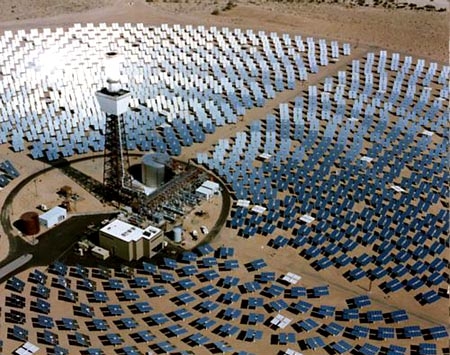
Putting the “Science” in “Science Fiction” – Solar Power
As I have discussed several times in the past, one of the main issues that we are currently facing, and that limits our development into the future, is our need for renewable, safe, and sustainable ways of harvesting energy. By far one of the safest, cleanest, and most renewable sources of energy is the sun, the ultimate source of energy for almost every living thing on this planet. However, our ability to capture this energy has historically been very limited. Solar cells may be becoming more common around the world, to the extent that it is not uncommon to see businesses or even private homes with solar cells on their roofs, but there are still serious limitations to the use of solar energy on a wide scale.
The main issue with solar power using current technology is that it is highly inefficient. Solar panels create electricity using a phenomena known as the photovoltaic effect, where electrons in a material can absorb energy from light and become free in the form of electricity. While this process requires little expenditure of energy once the system is set up it is also highly inefficient. Current estimates is that solar cells can never go beyond 20% efficiency, meaning that 80% of the potentially useable energy is lost. This inefficiency means that solar energy farms need to be very large in order to generate a useful amount of energy. Solar cells can also only function in bright sunlight, meaning that they are useless at night, or even on cloudy days. Since many parts of the world have weather that is usually cloudy, the potential uses of solar power are limited. Despite these limitations research is still ongoing, and new breakthroughs are coming to light that might make this technology more useful in the years to come.
One advance is the creation of new types of solar power plants to improve efficiency, like the solar thermal plant at Australia’s CSIRO Energy Center. Instead of using sunlight to create electricity directly plants of this type use mirrors to reflect sunlight into a fluid system, boiling it and turning turbines to generate electricity. Recent breakthroughs with computer adjusted mirrors have allowed the CSIRO plant to improve efficiency and power generated enormously.
A second recent technological advance is increasing the spectrum of light that solar panels can use. Current solar panels use only the visible light spectrum, the light we can see with the naked eye, but researchers at Canada’s own University of Waterloo are working to allow solar cells to harvest infrared light as well. Infrared light reaches Earth alongside the visible light, and continues to radiate back from objects and the planet itself after the sun goes down, meaning a solar cell that collected both forms of light could continue to operate at night. There would also be a significant increase in efficiency, with researchers predicting a combination solar cell would be up to three times more efficient at producing electricity than a conventional one.
Even with the advent of new and more efficient solar cells the question of where to put them is a daunting one. The inventors at Solar Roadways have created a novel and unique solution. They have created a series of solar panels that are strong enough to resist the weight of the largest of trucks, and suggest that such a system could be used to line roadways, parking lots, sidewalks, and other areas that are currently made of concrete or asphalt. Each cell is hexagonal in shape, and modular for easy replacement. They contain solar cells, heating elements to melt snow and ice, LEDs to create road markings, and interior channels to transport stormwater or run cables through. There is also room for the technology to expand, and they hope to provide charging capabilities for electric cars, and even wireless charging later on, as well as the potential to use onboard sensors and LEDs to warn drivers of upcoming hazards. Their campaign is currently being funded on Indiegogo, meaning that ordinary people can contribute to bringing this unique invention into the real world, and shows people are becoming more involved with the technology they use throughout their lives.
Solar power may never become the world’s primary energy source, but any method of generating power safely, cleanly, and cheaply, is worthy of being explored, and with advances like these it seems like the future for solar power may be bright indeed.












